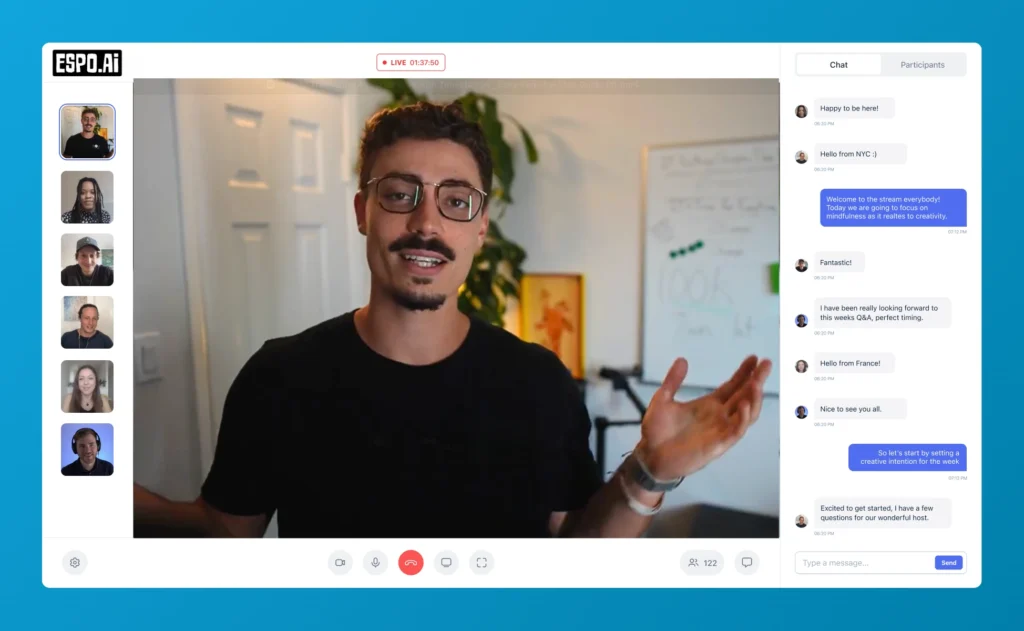In the evolving landscape of AI interactions, constrained generation stands out as one of the most powerful techniques for getting precise and creative outputs from large language models. Rather than giving an AI system complete freedom, setting specific rules and limitations can dramatically improve the quality, relevance, and usefulness of its responses. This guide explores how to harness the power of creative constraints in your AI prompting strategy to unlock better results.
Constrained generation isn't just about setting limits—it's about strategically channeling the AI's capabilities toward your specific goals. Here's why this approach leads to better outcomes:
When crafting prompts with constraints, consider these five effective approaches:
Structural constraints define the format or organization of the output. These constraints help when you need content in a specific layout or presentation style.
Example: "Write a haiku about artificial intelligence."
This simple instruction forces the AI to work within the traditional 5-7-5 syllable structure of haiku poetry, resulting in a concise, focused output.
Content constraints specify what information should or shouldn't be included in the response. These are particularly useful when targeting specific aspects of a topic or avoiding certain elements.
Example: "Explain quantum computing without using technical jargon."
This constraint pushes the AI to translate complex concepts into accessible language, making the output more valuable for non-technical audiences.
Linguistic constraints set rules on the types of language or vocabulary the AI can use. These can lead to particularly creative outputs while demonstrating the system's linguistic flexibility.
Example: "Describe a sunset using only words that start with the letter S."
This type of constraint creates a challenging linguistic puzzle that often results in surprisingly elegant and creative descriptions.
Logical constraints impose rules that require problem-solving or logical thinking in the response. They're excellent for generating content that engages readers' critical thinking.
Example: "Create a murder mystery where the culprit is never explicitly named but can be deduced from the clues."
This constraint requires the AI to craft a narrative with internal consistency and logical coherence, often resulting in more sophisticated outputs.
Quantitative constraints set numerical limits on outputs, such as word counts, paragraph numbers, or time frames. These are among the most commonly used and effective constraints.
Example: "Summarize this article in 50 words or less."
Such constraints force the AI to prioritize information and express ideas efficiently, leading to more concise and impactful content.
Tip: Quantitative constraints are particularly effective for business communications where brevity and clarity are valued. Try asking for "3 key takeaways" or "a 100-word executive summary" to get focused, actionable information.
To maximize the benefits of constrained generation in your prompts, consider these proven techniques:
Clearly define your constraints, leaving no room for misinterpretation. Vague constraints often lead to outputs that miss the mark.
Good: "Write a 300-word blog introduction about renewable energy that includes exactly three statistics."
Less Effective: "Write something short about green energy with some data."
Layer different types of constraints for more complex and interesting outputs. This technique often produces the most unique and tailored results.
Example: "Write a 5-paragraph email to potential investors that uses no negative language, includes 3 market statistics, and ends with a clear call-to-action."
Ask the AI to respond as if it were a specific character or type of expert. This shapes not just what information is provided but how it's expressed.
Example: "Explain the theory of relativity as if you were explaining it to a curious 5-year-old."
Frame your constraints around a specific goal or purpose to ensure the output serves your intended function.
Example: "Write a podcast description that would appeal to eco-conscious Millennials and drive subscription conversions."
Start with broader constraints and gradually add more specific ones to hone in on your desired output. This iterative approach often yields the best results.
Initial prompt: "Write about climate change solutions."
Refined prompt: "Write a 400-word analysis of three urban climate change solutions that require minimal governmental funding."
Further refined: "Write a 400-word analysis of three urban climate change solutions suitable for private sector implementation in developing countries. Include approximate cost ranges and potential ROI timeframes."
Let's explore how constrained generation can be applied across various use cases:
Prompt: "Write a six-word story about a time traveler. Each word must start with a different letter of the alphabet."
This highly constrained prompt pushes the AI to be remarkably creative within tight limitations. The resulting micro-stories often capture complex narratives in surprisingly few words.
Prompt: "Analyze this marketing dataset and provide insights using only bullet points. Each bullet point must be exactly 10 words long and focus on actionable recommendations."
This format constraint ensures you receive concise, practical takeaways rather than lengthy explanations, making the output immediately useful for business decisions.
Prompt: "Propose a solution to urban traffic congestion without mentioning cars, buses, or trains."
By restricting the obvious solutions, this constraint forces the AI to explore more innovative and potentially overlooked approaches to the problem.
Prompt: "Summarize this research paper in five sentences. Each sentence must contain exactly one technical term which you must define in parentheses."
This combines quantitative constraints with content requirements to create a summary that's both concise and educational, making complex information more accessible.
Tip: When working with output constraints for professional content, consider your audience's familiarity with the subject. For technical audiences, you might constrain the AI to include specific terminology, while for general audiences, you might constrain it to avoid jargon entirely.
Constrained generation is a fundamental skill in effective prompt engineering. As you develop your AI prompting expertise, experiment with different combinations of constraints to discover what works best for your specific needs.
To further enhance your AI interaction capabilities:
By mastering constrained generation techniques, you'll not only get better results from AI systems but also develop a more sophisticated understanding of how to effectively collaborate with these powerful tools.




